
In my previous blog, I discussed the symptoms and risk factors of carpal tunnel syndrome (CTS). Remember: check with your doctor or a medical professional to determine if CTS is the medical condition you have.
In the second part of my blog series, I will list and demonstrate exercises intended to rehabilitate and diminish the symptoms associated with CTS, including pain in the hands, wrists and forearms. In order to see the best results, these exercises should be performed daily, and will only take 10-15 minutes out of your day. The exercises can be repeated with the other hand if CTS is prevalent.
Muscles in the hands and forearms
Below are muscles that are found in the hands and forearms. By identifying the location and actions of these muscles, it may provide a better understanding on why the exercises I have chosen below can help manage pain from CTS.
Interossei (Dorsal and Palmer) muscles – The dorsal interossei enables us to spread our fingers apart while the palmer interossei pulls our fingers close. They are located in between your finger joints at the base of the hand.
Hyperthenar + Thenar muscles – The hyperthenar muscle group forms the majority of the pinky side of the hand and enables movements on that area. The thenar muscle group is responsible for movements on the thumb side.
Lumbricals muscles – These muscles are located at the base/middle portion of the hand is is responsible for straightening the fingers
Adductor pollicis muscles – This muscle is located between your pointer finger and your thumb and enables you to pinch objects.
Flexor carpi radialis, flexor carpi ulnaris, flexor digitorum profundus/superficialis, flexor pollicis longus muscles (flexor muscles of the forearm) – These muscles are located on the back side of your forearm and are all used to flex the hand (lifting the back of the hand towards the forearm).
Extensor carpi radialis brevis/ longus, extensor pollicis brevis/ longus muscles (extensor muscles of the forearm) – The extensor muscles allows the hand the perform extension (bringing the palm of your hand towards the forearm).
Here is a link with diagrams and more information about the muscles I have listed above.
Carpal Tunnel Syndrome Exercises
Wrist extension and flexion with pull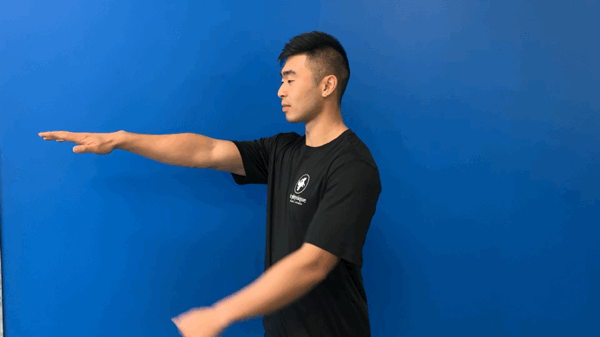
This exercise will help relieve tension in the flexors and extensors in your forearm. These are the muscles responsible for pointing your fingers to the sky and down towards the ground. Through excessive typing, these muscles can often become tight and require stretching.
– Place one arm straight in front of you at shoulder level
– Keeping your arm in place, raise your finger tips towards the sky
– Using the other hand pull the fingers backwards towards you until a stretch is felt
– Hold for 30 seconds
– Alternatively, you can point the fingers towards the ground and use the opposite hand to pull
Tennis ball or stress ball contractions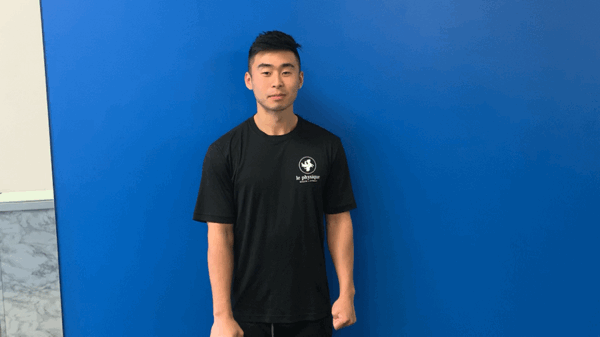
Performing finger contractions is beneficial in improving finger strength as well as forearm strength. This can help promote blood flow to the forearms and wrist, which can assist the recovery of CTS. Alternatively, this can be done with any item (ideally a ball) – with a harder item providing greater resistance. As your symptoms get better, gradually increase the resistance used for this exercise.
– Using a tennis ball or stress ball
– Squeeze the object for 5-10 seconds before releasing
– Perform 15-20 repetitions
Finger touches
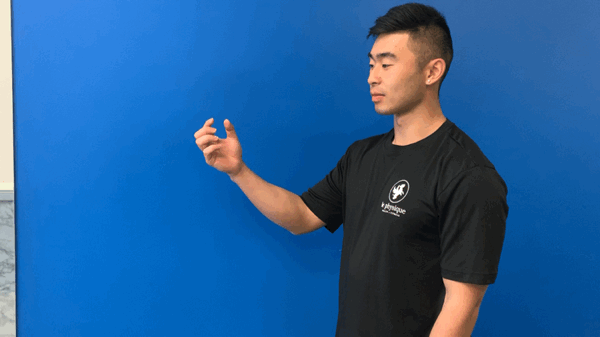
This exercise can improve mobility in the finger joints and counteract built up stiffness in the area.
– Place one hand in front of you in a comfortable position
– Take your thumb to touch and hold the tips of each finger for 3 seconds
– Make sure to apply a slight force at each finger
– Repeat and cycle through 3-5 times
Fist to extension
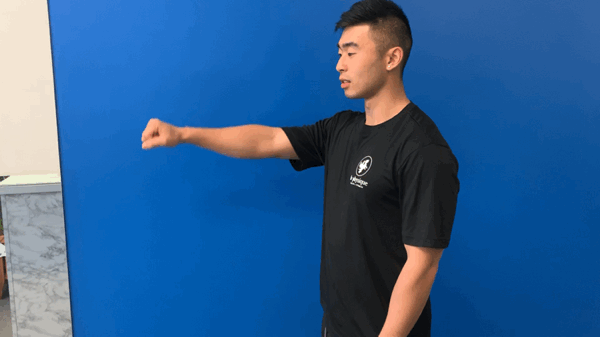
Similar to the first exercise, this one assists with the flexors and extensors of the forearm. Because tenderness is often felt in this area at the onset of CTS, this exercise can help relieve these symptoms.
– Place one hand in front of you in a comfortable position
– Make a fist with the hand hold for 2 seconds
– Extend fingers out wards and hold for 3 seconds
– Repeat for 12-15 repetitions
Finger slides
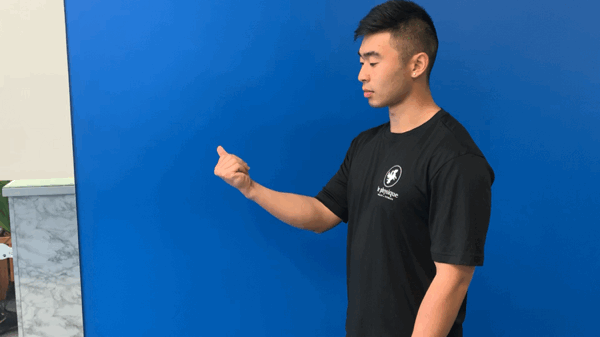
This exercise is excellent in maintaining mobility in your finger joints and ensures that you can perform a fluid motion with your fingers. It also stretches the extensor muscles at the end of the movement.
– Place one hand in front of you in a comfortable position
– Fold your fingers over and try to reach as far down your hand as you can
– Slide your fingers up along the hand until fully extended
– Repeat for 12-15 repetitions
Elastic finger expansions
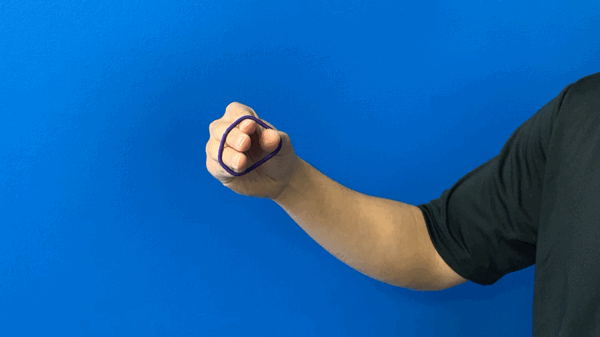
Several contraction exercises have been listed above, so this exercise will help balance the strength in your hand by targeting the opposing muscles. Simultaneously, the extensor muscles are also engaged.
– Place one hand in front of you in a comfortable position
– Place thumb and fingers in contact with each other
– Using a hair tie or elastic band, wrap around the fingers
– Expand the fingers and thumb as much as you can and hold for 3-5 seconds
– Repeat for 12-15 repetitions
External rotation wall gliders 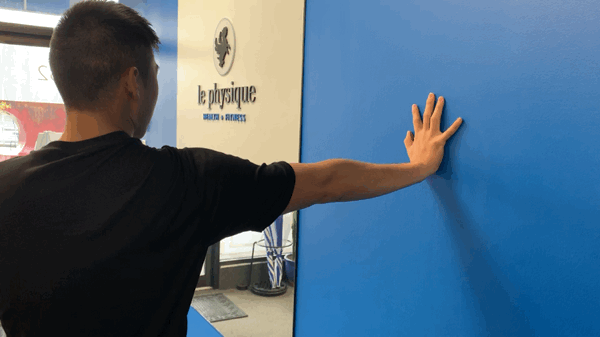
Wall gliders can improve flexibility in the wrist as well as the shoulder joint. A stretch can be felt immediately in the fingers and the forearm upon rotation of the fingers in a downward direction.
– Standing a single arm span away from a wall, fully flex your arm up until parallel with the ground
– Place palm flat on wall with fingers pointing up
– Rotate fingers backwards until fingers face the ground
– Hold for 3 seconds and repeat for 12-15 repetitions
Shaking it out
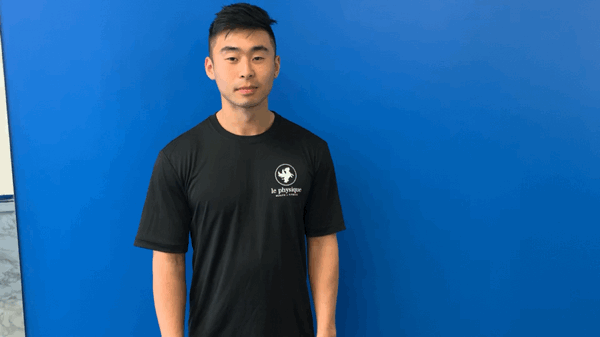
Shaking your hands will provide temporary relief to the aching areas.
– Having hands in front of you shake hands in a controlled manner
– Shake hands to allow for wrist movement as well as below the elbow to engage forearms
– Shake for 5-10 seconds
A consistent rehabilitation schedule will yield the greatest results. Taking time during your commute or lunch break to perform these exercises can greatly benefit and relieve symptoms of CTS.
Kevin Kwok – Studio Coordinator
 Kevin enrolled in numerous sports program as a child, which exposed him to an active lifestyle early in life. He played ultimate frisbee competitively at the junior level while in high school. Kevin now focuses his training exclusively on dragon boating. He has been paddling for the past 3 years and hopes to make the Canadian National Team in 2019. He hopes he can motivate others to accomplish their short and long term fitness goals
Kevin enrolled in numerous sports program as a child, which exposed him to an active lifestyle early in life. He played ultimate frisbee competitively at the junior level while in high school. Kevin now focuses his training exclusively on dragon boating. He has been paddling for the past 3 years and hopes to make the Canadian National Team in 2019. He hopes he can motivate others to accomplish their short and long term fitness goals







